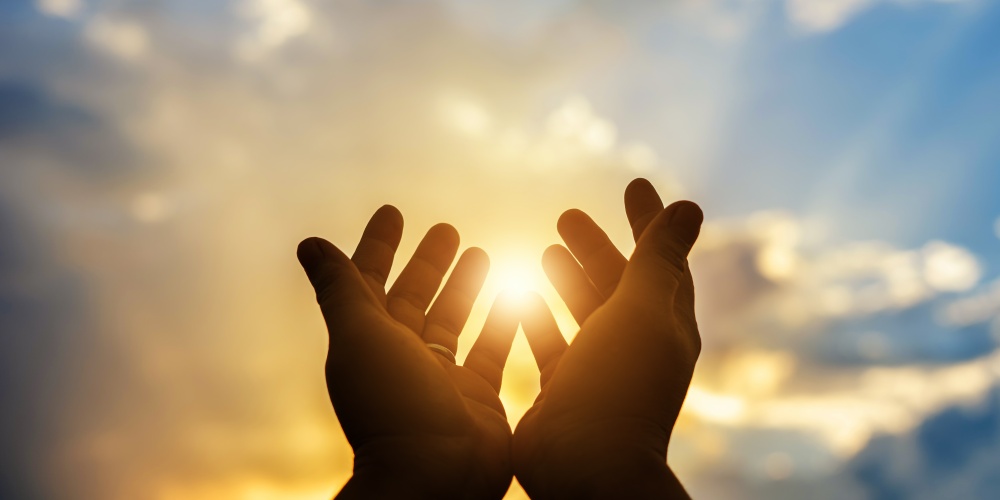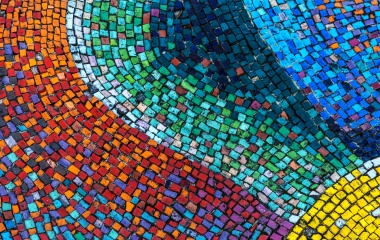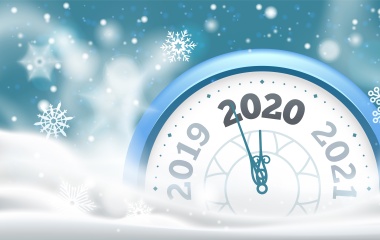
“Ubechen, Please G-d instill pachdecha, terror upon all Your works and eimatecha, Your dread upon all that You have created”. So begins the Amidah on Rosh Hashanah and Yom Kippur, as we coronate the King of kings[1].
The Torah commands veahavta, that we are to love G-d, and veyareta, and we are to be in awe of G-d. That our tradition values the former more than the latter is seen by the obligation to declare our love of G-d twice each day[2]. Because love can lead one to take liberties, even to take advantage of another, we must temper that love with awe, something that denotes distance. There is no greater distance than that of the human from the Divine. Our relationship with G-d is a complex one. At times we aim to focus on the closeness of G-d and at times it is His distance that must be our focus. But only during the Yamin Noraim, the fearful days, do we pray for pachad and eimah, terror and dread.
Normally these are not healthy emotional states and should not and do not reflect our relationship towards a loving G-d who “gives his hands to sinners” ,”Who waits until the day of death for his return”, Who gave us the gift of teshuva, enabling us to turn past sins into mitzvot, who has – despite much suffering – enabled the Jewish people to survive, thrive and return to their Land.
But Rosh Hashanah, Yom Hadin, the day of judgement is not a normal day. It is the day that “the books of life and death are opened before Him”, the day it is written “who will live and who will die; who by water and who by fire who by plague and who by earthquake. Ubechen, yes, please G-d, “instill terror and dread on all that You have created”.
Yet we do not pray for fear for fear’s sake. Fear can be debilitating. No relationship can thrive or even endure if it is based on fear. Rather, we pray for the upside of fear, fear that motivates us to do better.
Hence, immediately after asking for pachad and eimah, we pray veyiraucha kol hamasim, that all shalll revere You, transitioning from dread to awe. And how might be do that? We continue, “And may they all form a single band to do Your will with a perfect heart”. We do so by coming together to do Your will. When the Jewish people are united there is nothing to fear.
The opening paragraph of the Amidah on Rosh Hashanah and Yom Kippur is thus a prayer, or more accurately, a plea for the unity of the Jewish people. And only we, the Jewish people, can answer this prayer. Just as G-d has no “power” to forgive sins committed against one's fellow man, so too there is little G-d can do to force us to treat each other as befitting one who is created in G-d’s image.
“And how do we know G-d prays” our Sages ask (Brachot 7a). As heretical as this question may seem – after all, we pray because we have needs – the follow up question the Talmud asks is a most practical one. “And what is His prayer?” “May it be My will” the Talmud continues, “that My mercy will overcome My anger and may My mercy prevail over My other attributes and may I conduct Myself toward My children with the attribute of mercy, and may I enter before them, lifnim meshurat hadin, before the straightness of the law” (Brachot 7a).
If G-d prays for mercy towards His children, that He should not be angry, that He should go beyond the letter of the law, that is probably something we, created in His image, should pray for too. Actually, we should not so much pray for this but rather act it out. We should, actually must, have less anger, more mercy and be willing to give up some of our legal rights. Those who insist on every legal right are those who destroy society. “Rabbi Yocḥanan says: Jerusalem was because rulings…were established on the basis of Torah law and not on the basis of lifnim meshurat hadin” (Bava Metzia 30b).
Rabbi Yochanan is giving the practical application of the more famous teaching that the Temple was destroyed because of sinnat chinam, baseless hatred. When people do not compromise with others – giving up some of their “rights” – when they do not act lifnim meshurat hadin, society cannot endure and destruction is at hand.
When it comes to the unity of the Jewish people it matters neither who is in the right nor who is more “religious”. When the Jewish people are torn apart…I hesitate to finish the sentence.
The Netziv – in his introduction to sefer Breisheet no less – writes that during the Second Commonwealth there were many, many righteous Jews, many who were engaged in Torah and good deeds (Yoma 9b). But that made absolutely no difference. Since the Jews were factionalized and polarized, with each group thinking that only they have the truth, destruction ensued. Being righteous, even acting for the sake of heaven, made absolutely no difference as G-d, the Netziv notes, “cannot tolerate such righteous people”.
The Meshech Chochmah (Shemot 14:24) notes that since “G-d dwells in the midst of their impurities” (Vayiyra 16:16) – an assertion made by the Torah itself that we read o Yom Kippur – it is much better (and safer) to have a united Jewish people worshipping idols than a disunited people dedicated to the service of G-d. Hence, the Meshech Chochmah explains, many more soldiers died during the reign of King David that during the reign of the evil Achav. Unity really is that important[3].
Our Sages note that while the dor haflagah, the generation of dispersion, were guilty of idolatry their punishment was much less severe than the generation of the flood, because the latter were guilty of theft, theft that our rabbis note that was most petty, being under a “penny”, a prutah.
The Rambam’s second principle of faith – right after belief in G-d – is the belief in the absolute unity of G-d. It is our duty to ensure that we who are mandated to walk in the path of G-d, emulate the unity above with the unity below, seeing each and every Jew as a sacred trust.
As we ready to enter the year 5784 let us join together with G-d in prayer and by doing so merit a year of joy, peace – both internal and external – and many blessings from above.
[1] The first three brachot introduce each and every Amidah and Rosh Hashana and Yom Kippur are no different. This prayer for fear is actually inserted just before the conclusion of the third bracha of hamelech hakadosh.
[2] From a halachic perspective, it is for this reason that when a positive and negative mitzva come in conflict, the positive, representing love, pushes aside the negative representing fear.
[3] I recall Rav Hershel Schachter telling us (though I can't remember which rabbinic figure he was quoting) that it is better to put an idol in the Temple than to have machloket, disunity; and that there has not truly been an argument for the sake of heaven for at least 500 years.



